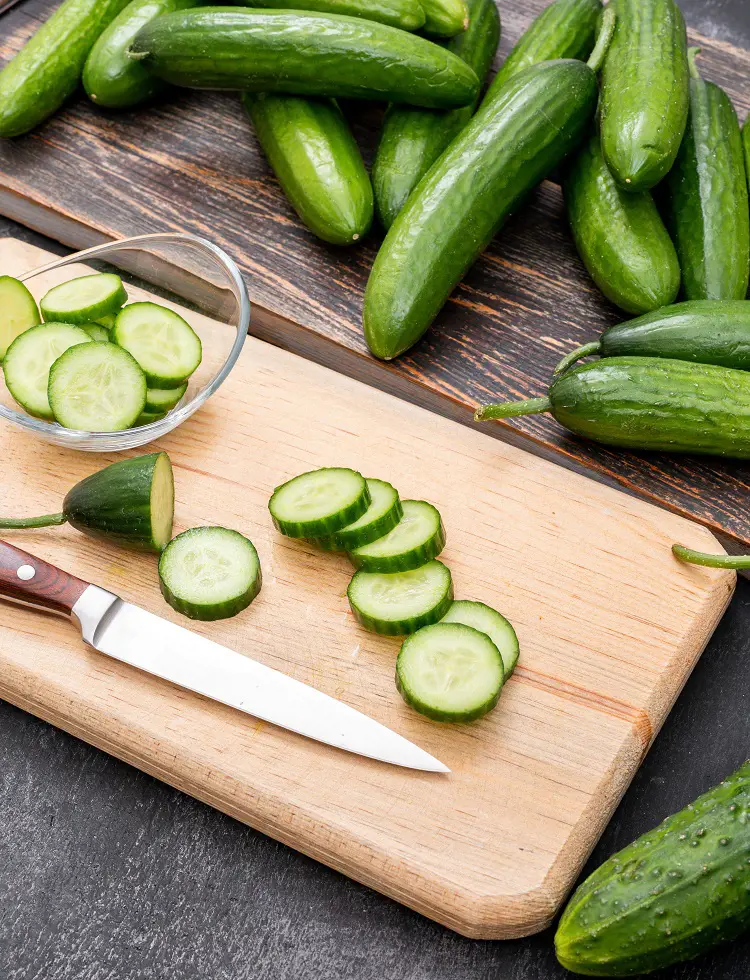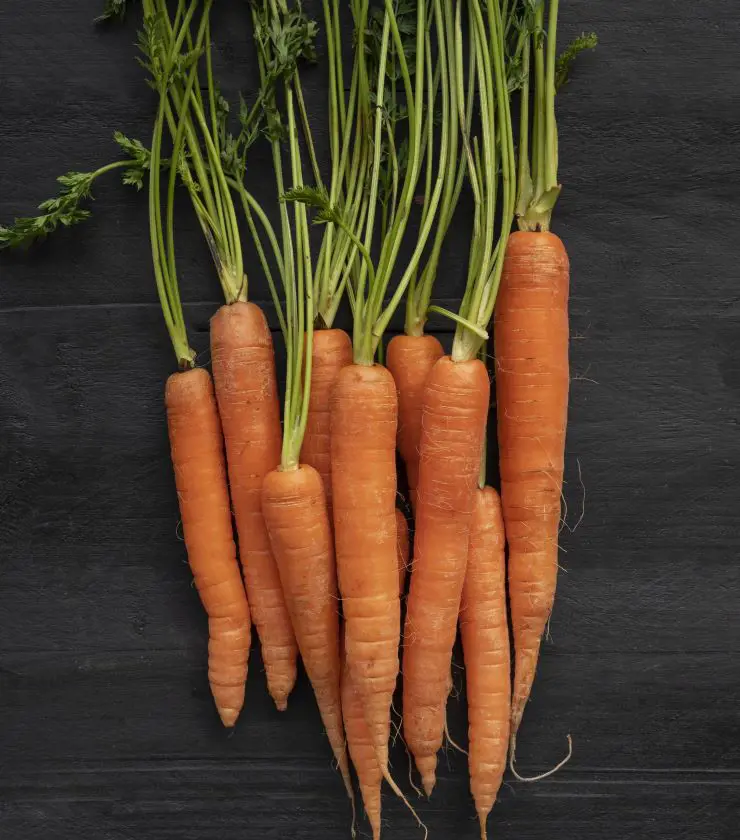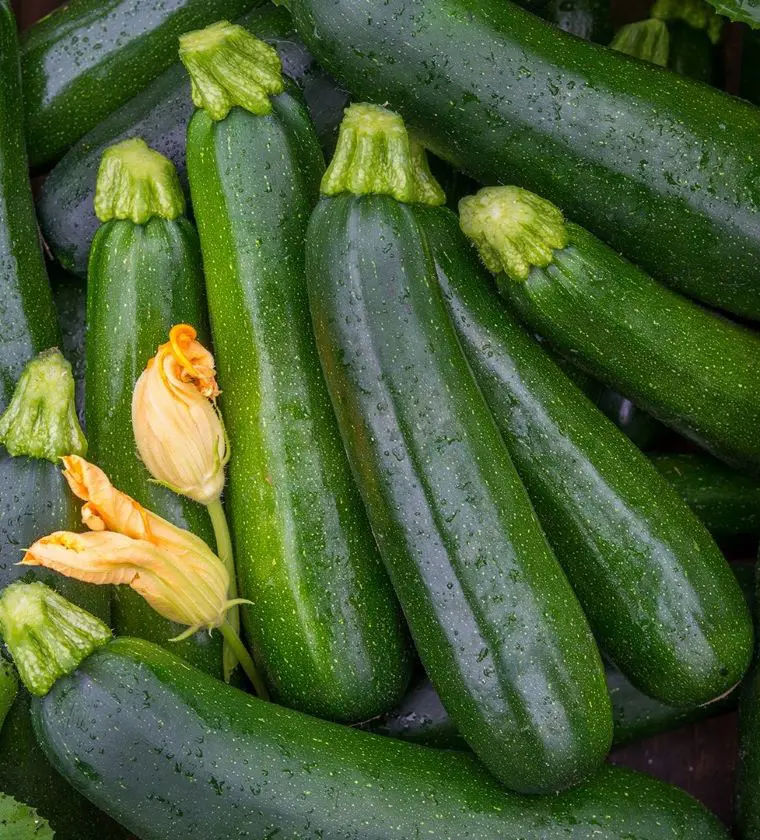How To Store Cilantro Leaves
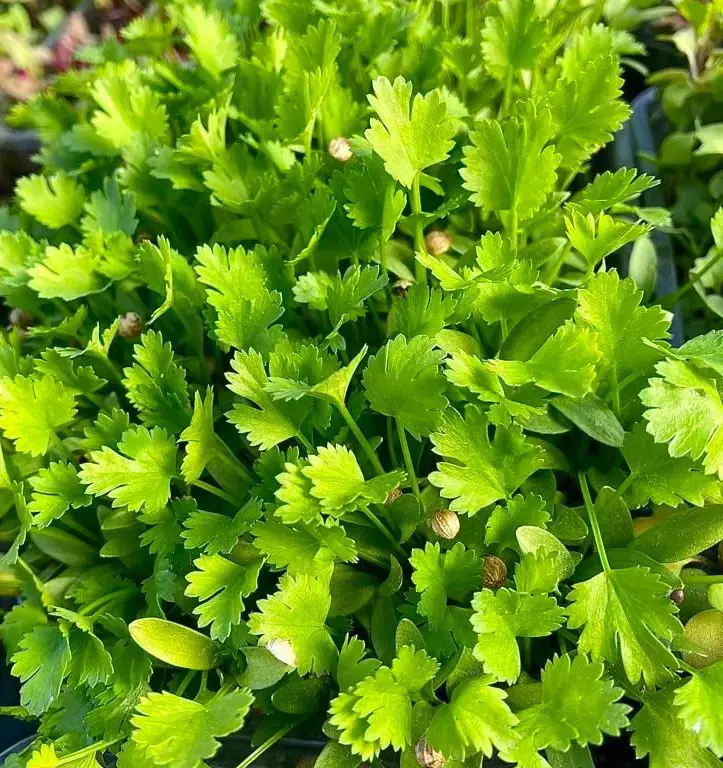
This post may contain affiliate links. If you make a purchase through links on our site, we may earn a commission.
Cilantro is an indispensable item in our kitchen. Cilantro's seeds, leaves, and stems can all be consumed and can be used in many dishes around the world including sauces, soups, curries, etc. Cilantro is a good option because of its pleasant scent, citrusy flavor, and various advantages to our health.
From its seeds to foliage and stalks, cilantro are flexible in use. However, fresh cilantro goes bad pretty fast. So, you might want to store them properly. This increases their shelf life and its readily availability adds more magic to your food.
Storing Cilantro
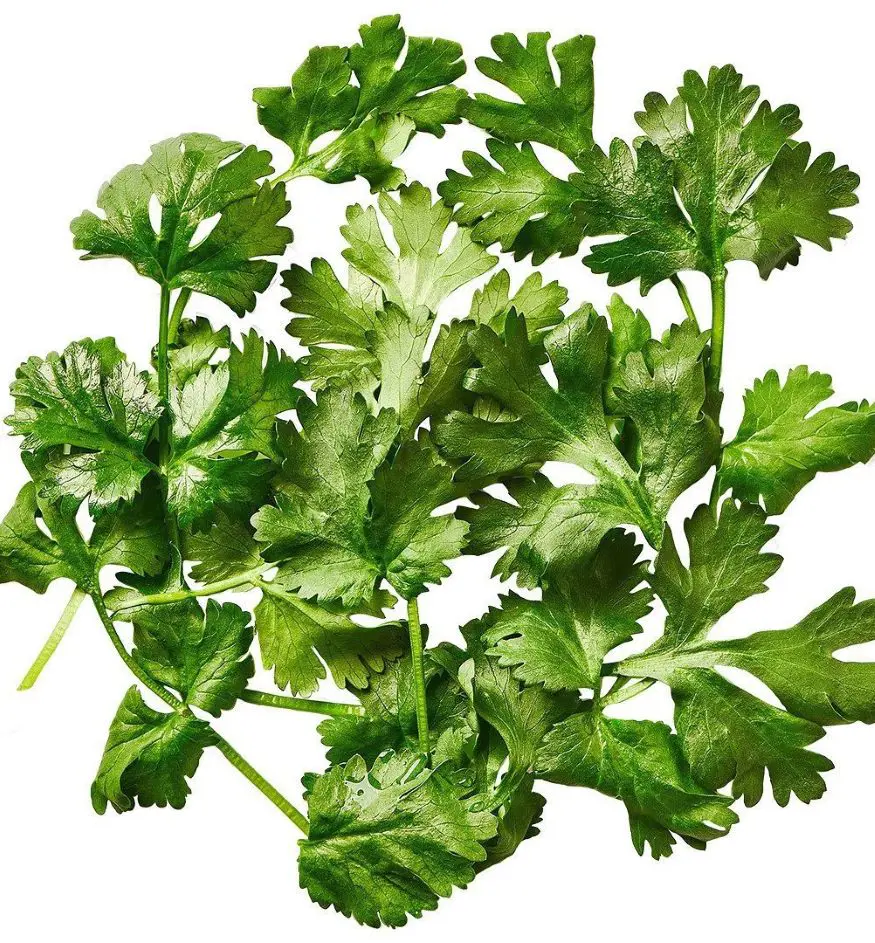
Because of the high water content, cilantro starts to wilt and rot rapidly. Thus, cilantro requires proper storage if you want to preserve it for some time. This section will provide some ideas about storing cilantro.
The Science Behind Cilantro Storage:
- Ethylene: This can wilt and damage cilantro.
- Moisture: Cilantro needs a somewhat humid environment. Too much humidity expedites its rotting.
- Temperature: Around 50°F temperature.
Best Ways to Store Cilantro
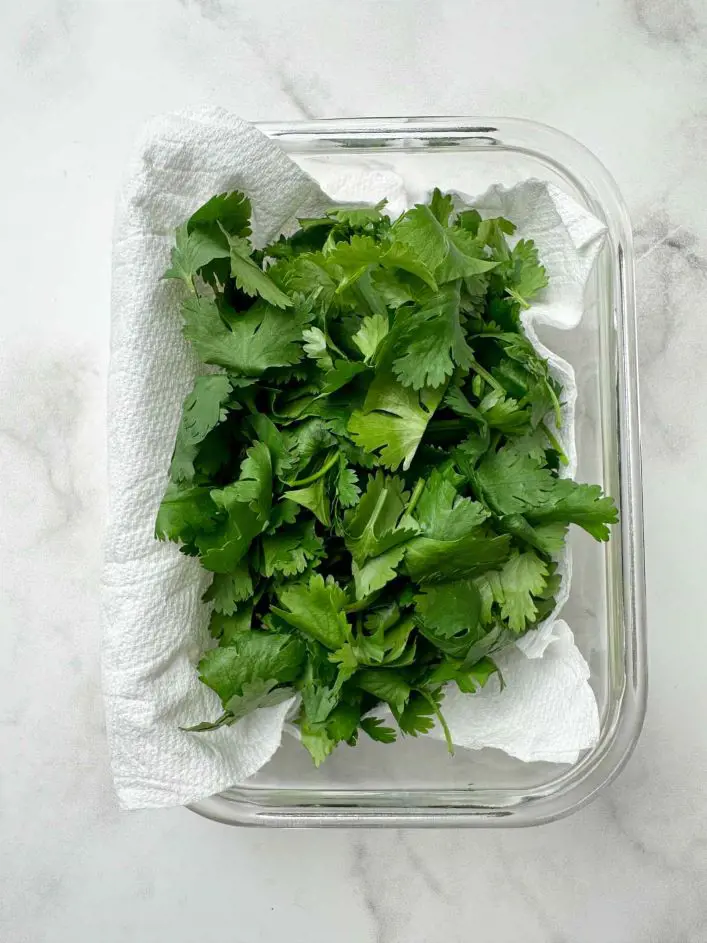
There are a few general ways that can promote the freshness of cilantro. Below are some ideas that you can apply at home for better results.
For weeks:
- Bouquet in Water: You can dip the stems of cilantro as a bouquet in a small water container. Do not forget to change the water regularly.
- Paper Towel Wrap: To remove excess moisture, pat the cilantro and with a damp paper towel, wrap it. Then, store in a refrigerator. Make sure to change the paper towels regularly in a few days.
For quick use:
- Chop & Freeze: Wash, dry, chop, freeze on a baking sheet, and store in an airtight container for up to 3 months.
Bonus:
- Avoid ethylene producers like apples and bananas.
- Say goodbye to wilted or discolored cilantro.
How To Keep Cilantro?
Keeping cilantro fresh involves several steps to preserve its flavor and quality over time. Follow these detailed instructions to ensure optimal storage:
Selection and Inspection
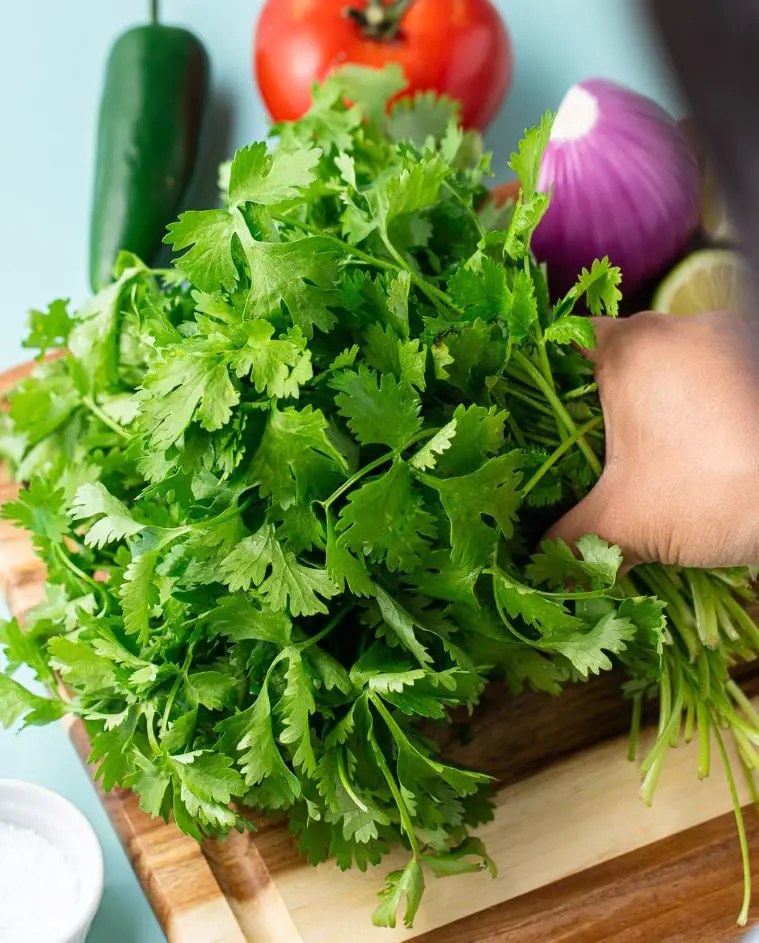
When purchasing cilantro, choose bunches with vibrant green leaves, avoiding those with yellowing or wilting. Ensure that the stems appear firm and healthy.
In addition to choosing vibrant bunches, consider opting for cilantro with longer stems, as this indicates younger, fresher leaves. Check for any signs of flowering, as flowering can lead to a decline in flavor.
Trimming and Cleaning
Trim the ends of the cilantro stems, removing any discolored or damaged leaves. Afterward, gently rinse the cilantro under cool running water to eliminate any dirt or debris.
When trimming the cilantro stems, use sharp scissors or kitchen shears to prevent crushing the delicate leaves. Allow the cilantro to air dry for a few minutes after rinsing to ensure that excess moisture is removed.
Regular Water Changes
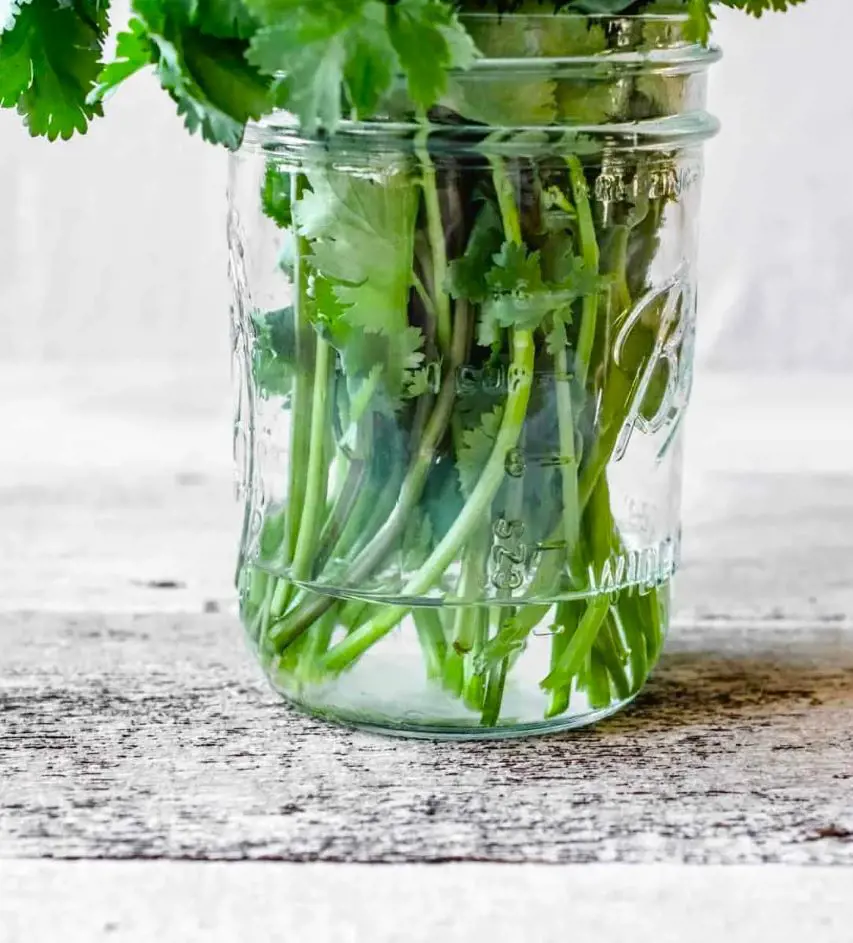
Maintain the freshness of the cilantro by changing the water in the jar every few days. This prevents the water from becoming stagnant and helps minimize bacterial growth, ensuring a clean environment for the herb.
Add a small pinch of salt to the water in the jar. This not only helps to prevent bacterial growth but also provides essential nutrients to the cilantro.
Ethylene Gas Sensitivity
Cilantro, the fast-growing seed, is sensitive to ethylene gas, which is produced by certain fruits like apples and bananas. To prevent premature aging, store cilantro away from ethylene-producing fruits.
Avoid placing cilantro near onions or garlic, as they can impart their flavors to the herb. Keep cilantro in a separate compartment or drawer in the refrigerator to maintain its distinct taste.
How To Store Fresh Cilantro?
Fresh cilantro, with its vibrant green leaves and zesty aroma, can quickly turn limp and wilted if not stored properly. There are a few simple tricks you can use to keep your cilantro fresh for up to a month.
The "Bouquet in Water" Method
This is the most common and effective way to store cilantro. Simply trim off the root ends of the bunch and place the stems in a glass or jar filled with about an inch of water.
Cover the leaves loosely with a plastic bag, securing it with a rubber band or twist tie. This will help trap moisture and prevent the leaves from drying out.
The "Paper Towel Wrap" Method
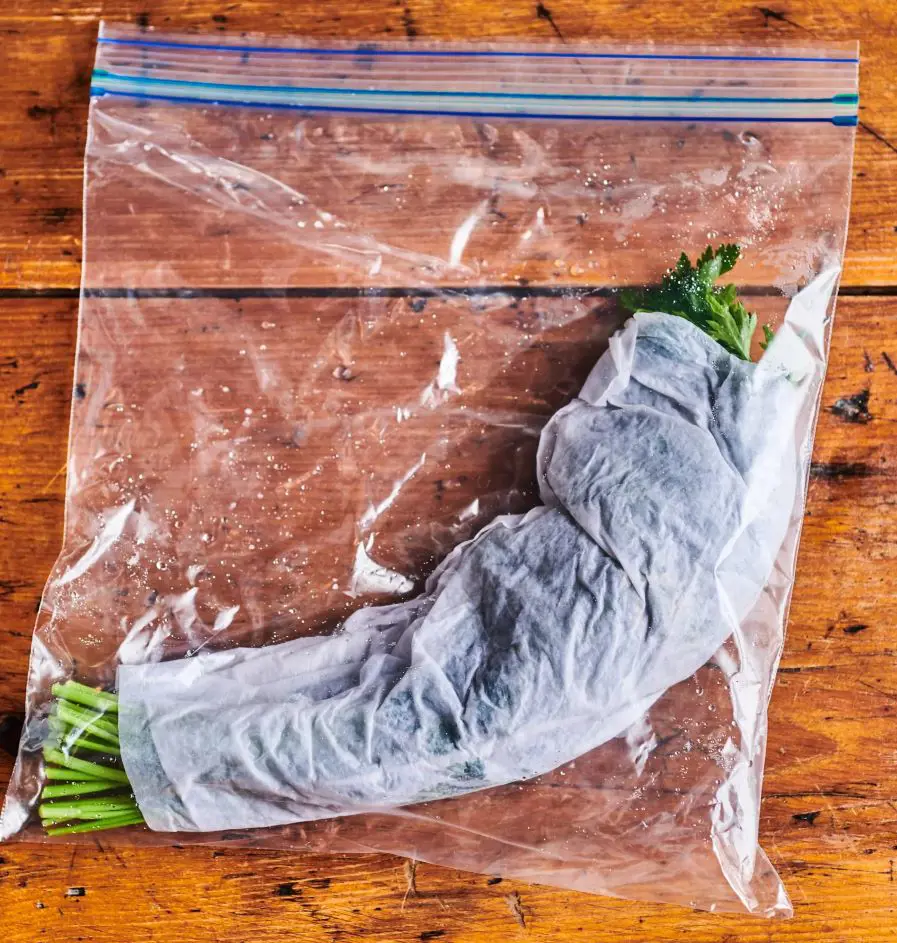
If you're planning to use your cilantro within a week or so, this method is a good option. Gently pat the leaves dry with a paper towel to remove any excess moisture.
Wrap the cilantro loosely in a damp paper towel, making sure all the leaves are covered. Place the wrapped cilantro in a plastic bag or airtight container and store it in the refrigerator.
The "Chop and Freeze" Method
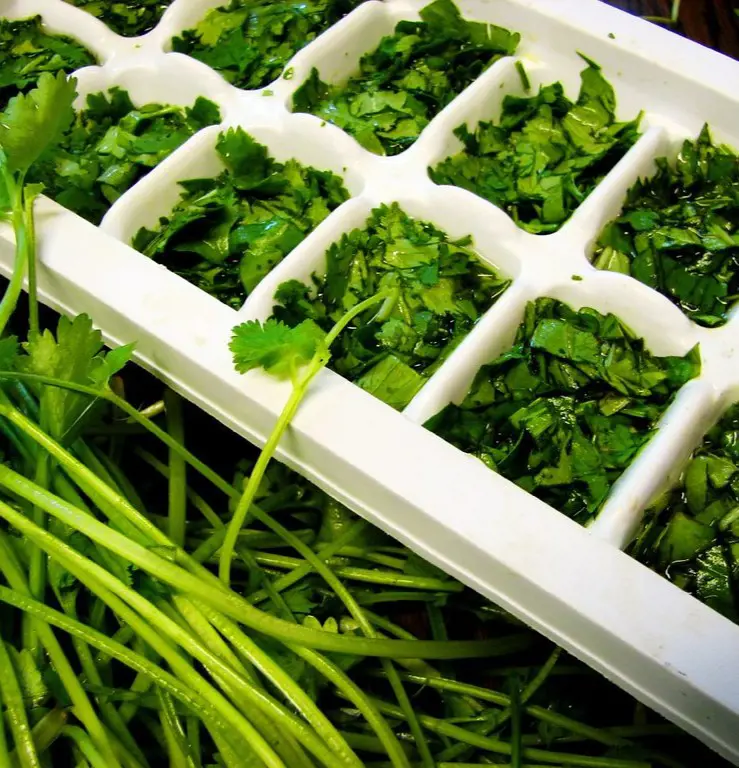
This method is perfect if you want to have cilantro readily available for quick cooking or adding to smoothies. Wash and dry the cilantro thoroughly, then chop it finely.
Spread the chopped cilantro in a single layer on a baking sheet lined with parchment paper. Freeze for about 30 minutes to an hour, or until solid.
Drying
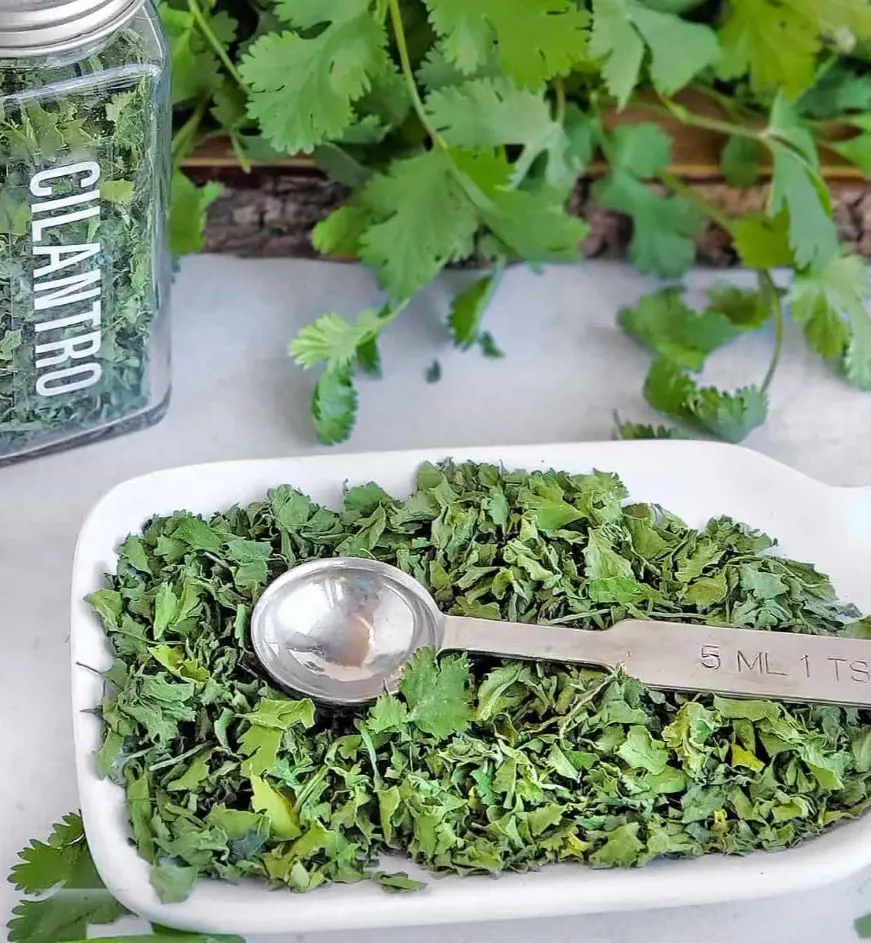
Tying cilantro in small bundles and hanging them upside down in a dry, well-ventilated area allows the herb to air-dry naturally. Once dried, the leaves can be crumbled and stored in an airtight container.
Dried cilantro is a versatile option for seasoning dishes and lasts longer than fresh cilantro.
Herb Keeper or Container
Using a specialized herb keeper or container with a water reservoir helps maintain optimal humidity levels.
By keeping cilantro in the refrigerator and changing the water in the reservoir regularly, this method extends the herb's freshness, ensuring it stays plump and flavorful.
Cilantro Pesto
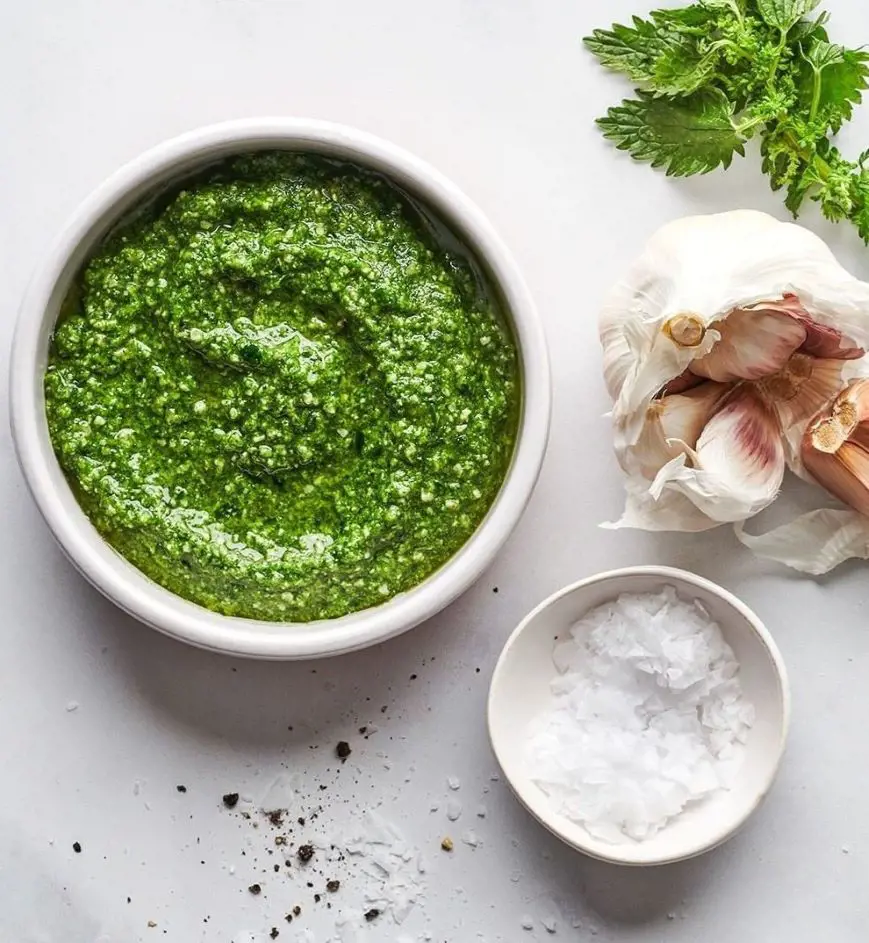
Making cilantro pesto involves blending cilantro with garlic, nuts, Parmesan, and olive oil. Storing the resulting pesto in small jars in the refrigerator or freezing it in ice cube trays allows for a convenient and flavorful way to use cilantro in various dishes.
The pesto can be a versatile addition to recipes, offering a burst of cilantro flavor. Also, learn how to grow basil and try basil pesto.
How Long To Store Cilantro?
The shelf life of cilantro depends on how you store it.
- Unwashed, loosely wrapped in a plastic bag: 2-3 days in the fridge. This is the quickest and easiest method, but it's not the best for long-term storage..
- Trimmed stems in a glass of water, loosely covered with a plastic bag: 1-2 weeks in the fridge. This "bouquet" method helps keep the stems hydrated and the leaves fresh. Change the water every few days.
- Wrapped in a damp paper towel and placed in a plastic bag: 5-7 days in the fridge. This method helps prevent the leaves from drying out, but it's not as effective as the water method. Change the paper towel every few days.
- Chopped and frozen in an airtight container: Up to 3 months in the freezer. This is a great way to preserve cilantro for later use. Just be sure to thaw it completely before using it.
How To Cut Cilantro?
Cutting cilantro is a simple process, and there are a few techniques you can use depending on your culinary needs. Here's a step-by-step guide on how to cut cilantro:
Gather Your Tools
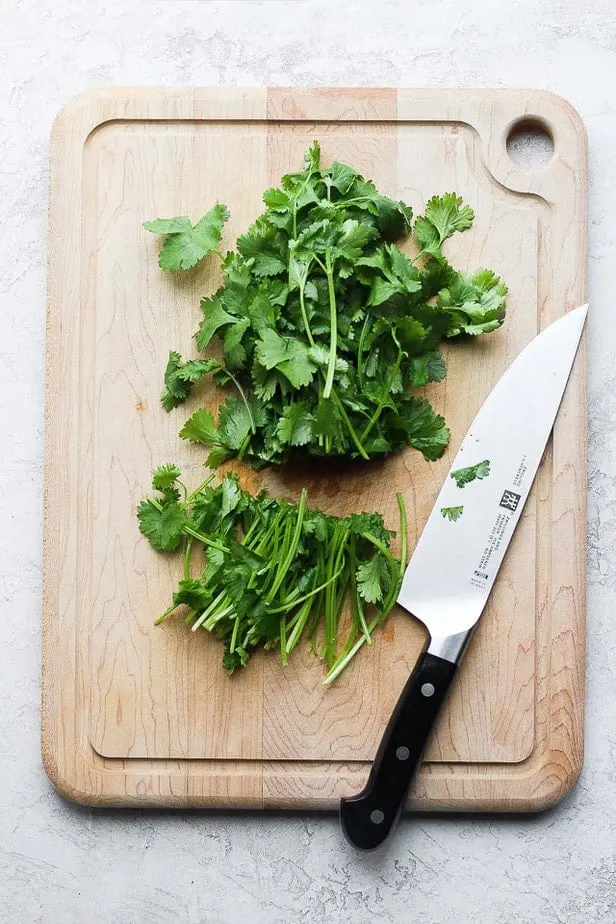
Before you begin, make sure you have a clean cutting board, a sharp knife, and a bowl to collect the cilantro leaves. A sharp knife helps prevent bruising and maintains the herb's freshness.
Rinse the Cilantro
Gently rinse the cilantro under cool, running water to remove any dirt or debris. Pat it dry with a paper towel or use a salad spinner to remove excess moisture.
Examine the cilantro bunch for any discolored or wilted leaves.
Separate Leaves from Stems
Hold the cilantro bunch at the base and separate the leaves from the stems. While some stems are edible and contribute to the flavor, removing the thicker, tougher stems is recommended for a smoother texture.
Choose your cutting style
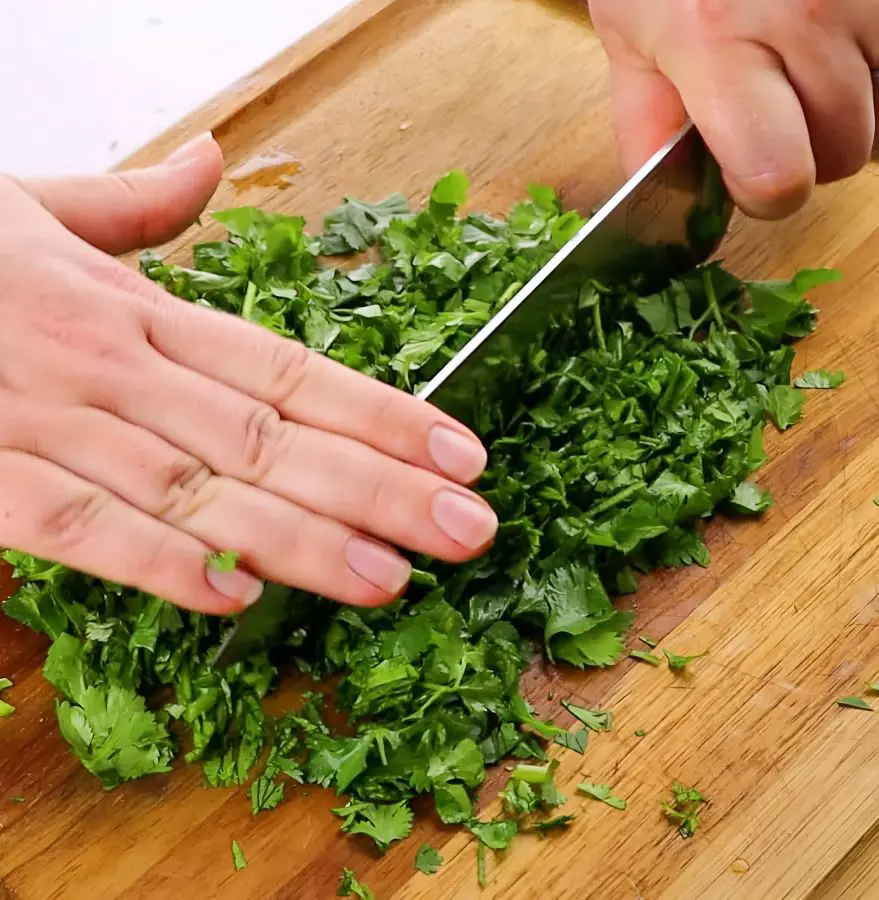
- Leafy Tops Only: Hold the bunch of cilantro by the stems. Use your knife to cut off the leafy tops, leaving the stems behind. This is suitable for garnishes or when you want the cilantro leaves only.
- Chop the Whole Bunch: Hold the bunch of cilantro by the stems. Position your knife at the desired height on the stems and make a straight cut. This includes both the leaves and the thinner stems. Suitable for recipes where the stems contribute to the flavor.
Finely Chop or Roughly Chop
Depending on your recipe and personal preference, decide whether you want finely chopped cilantro or a more rustic, rough chop. Adjust the size of your cuts accordingly.
Finely chopped cilantro is ideal for garnishes or dressings, while a rough chop works well for salsas or marinades.
Use immediately or store
Freshly cut cilantro is best used immediately for optimal flavor. If you don't plan to use all the cilantro immediately, store the unused portion to maintain its freshness.
Consider using one of the storage methods mentioned earlier, such as placing the cut cilantro in a jar with water, wrapping it in a paper towel, or freezing it in ice cube trays.
Tips:
- Use a sharp knife to avoid bruising the cilantro leaves.
- Adjust the level of fineness based on your recipe; some dishes benefit from coarsely chopped cilantro, while others require a finer texture.
- Consider the specific part of the cilantro you need for your dish—leaves, stems, or a combination of both.
How To Grow Cilantro?
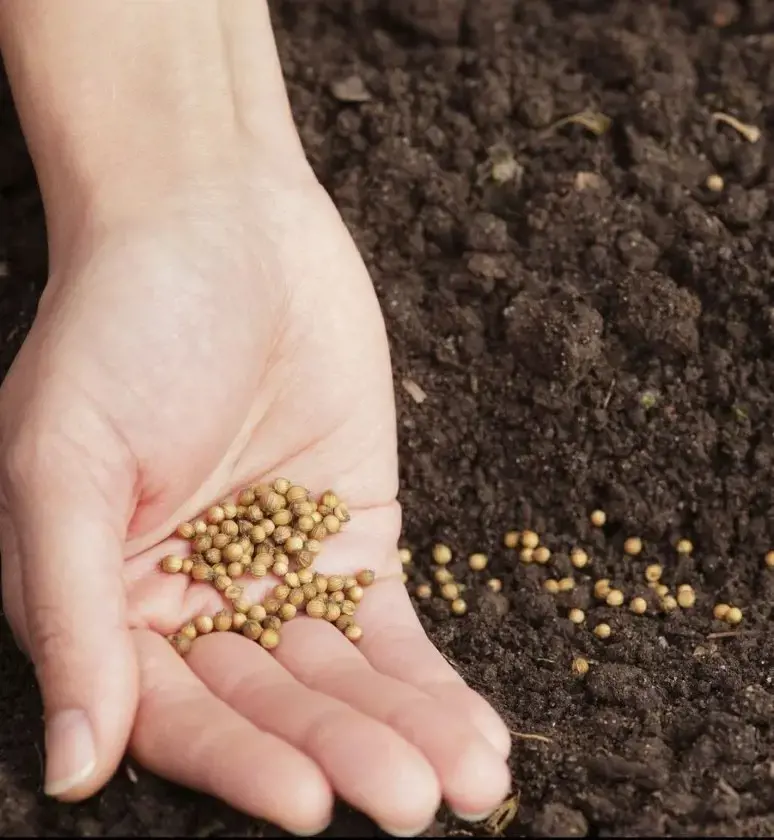
Cilantro, with its vibrant leaves and zesty aroma, is a kitchen staple. But why settle for store-bought when you can cultivate your fresh supply? Growing cilantro is surprisingly easy, and with a little TLC, you can enjoy its citrusy goodness all season.
Here's a quick cheat sheet to get you started:
- Timing: Cilantro thrives in cool weather, so plant in early spring or fall. In hot climates, choose a slow-bolt variety or plant in partial shade.
- Sunshine: Cilantro prefers full sun (6–8 hours) but can tolerate some afternoon shade in hot regions.
- Soil: Well-draining soil is key. Amend your garden bed with compost or aged manure for extra nutrients.
- Planting: Sow seeds directly in the soil, spacing them about 1 inch apart. Lightly cover with soil and keep moist.
- Watering: Water regularly, keeping the soil evenly damp but not soggy.
- Harvesting: Start harvesting leaves when they're about 3–4 inches tall. Pinch off individual leaves or cut stems just above the base.
Bonus tip: Succession planting. Sow seeds every few weeks to ensure a continuous supply of fresh cilantro throughout the season.
Recent posts
How To Store
How To Store
How To Store Cucumbers
A good cucumber is cool, crunchy, and refreshing, but if you don't store it right, it can turn mushy and not good to eat. To keep cucumbers fresh, store them where they can get air and not too wet. Now, let's talk about different ways to keep cucumbe...
How To Store
How To Store Garlic Properly
Garlic is a kitchen pioneer important for adding flavor and depth to countless dishes. However, if stored incorrectly, garlic may lose its potency or even go bad. When stored properly a fresh garlic bulb can last up to six months otherwise, it will o...
How To Store
How To Store Potatoes - 15 Simple Tricks
Potatoes are a versatile vegetable loved for ages. From French fries to baked potatoes, there are many ways to enjoy them and they also naturally have a long shelf life. However, it is concerning that they can't last long without proper precautions. ...
How To Store
How To Store Carrots So They Last Longer
Carrots typically last for days and weeks at room temperature. If stored properly using the right technique, it can last for several months too. From harvesting to freezing, several ways can help extend the carrots’ shelf life. In this gu...
How To Store
How To Store Avocados Long Term
Avocado is a delicious, yet highly perishable fruit with nutritive benefits. Its high metabolic rate is the major contributing factor to its shorter shelf-life. The shelf-life of avocados ranges from 3-4 weeks when stored at the ideal temperature and...
How To Store
How To Store Zucchini - 9 Tips To Keep Fresh
Zucchini belongs to the Cucurbitaceae family and is a type of summer squash. With its mild flavor and tender texture, zucchini has become a popular ingredient in numerous culinary creations. Zucchini is a sturdy veggie, but to keep it tasting yummy a...
